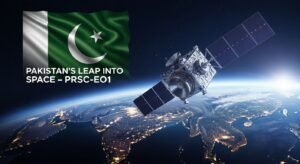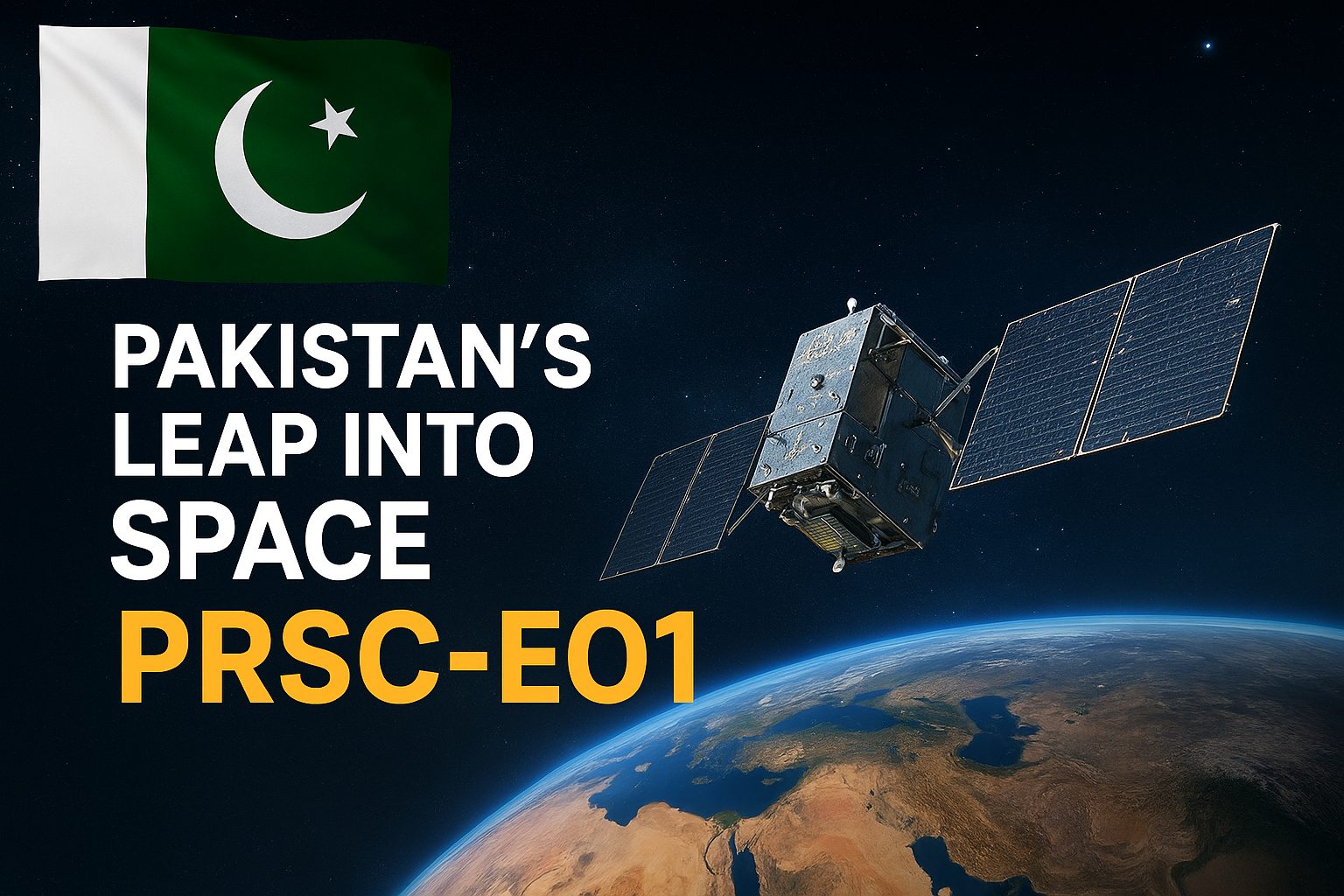On January 17, 2025, Pakistan celebrated a historic milestone — the launch of PRSC-EO1, the country’s first domestically developed electro-optical remote sensing sat ellite. Under the “Space Vision 2040” initiative, this launch marks a new chapter in Pakistan’s scientific autonomy, agricultural planning, and environmental monitoring capabilities.
ellite. Under the “Space Vision 2040” initiative, this launch marks a new chapter in Pakistan’s scientific autonomy, agricultural planning, and environmental monitoring capabilities.
The PRSC-EO1 Launch: A New Horizon
Developed by SUPARCO, Pakistan’s space agency, PRSC-EO1 was launched aboard China’s Long March-2D rocket from Jiuquan Satellite Centre. It followed closely after Pakistan’s earlier PAUSAT-1 launch via SpaceX’s Falcon 9 — a sign of growing confidence in both indigenous technology and international partnerships. PRSC-EO1 is equipped with high-resolution optical payloads capable of capturing multispectral images at near 1 meter resolution.
Strategic Value: Beyond the Sky
This is more than a space mission—it’s a tool for progress:
-
Agriculture & Land Mapping: Real-time data supports crop monitoring, land-use planning, and yield optimization.
-
Disaster Response: PRSC-EO1 offers critical surveillance during floods or earthquakes, enabling faster, better-coordinated relief.
-
Environment & Urban Planning: From tracking deforestation to mapping infrastructure, the satellite empowers data-driven governance.
Backdrop: Space Vision 2040
The PRSC-EO1 launch fits into a broader strategy: Space Vision 2040, under which Pakistan aims to develop and launch an entire constellation of remote sensing satellites — PRSC-EOS — to achieve independence in geospatial data and space-based services.
Why This Matters Now
-
Technological Sovereignty: Building and operating its own satellite fleet positions Pakistan as a self-reliant space actor in South Asia.
-
Policy Leverage: Earth observation data supports international negotiations on water, climate, agriculture, and trade.
-
Global Confidence: Demonstrates scientific capability, expanding potential for international collaboration in space tech and research.
What’s Next for Pakistan’s Space Future
-
Data commercialisation: Offering satellite imagery for sectors like agriculture, urban development, and mining.
-
Education & STEM: Inspiring youth through local space achievements and STEM programmes.
-
Constellation deployment: Completing the PRSC-EOS series to cover the country with refined remote sensing tools.
Conclusion
PRSC-EO1 is not just a satellite; it’s Pakistan’s vision in orbit — of autonomy, precision, and global competence. As the next generation of satellites takes flight, Pakistan heralds a future where space science uplifts agriculture, protects the environment, and asserts technological sovereignty.





